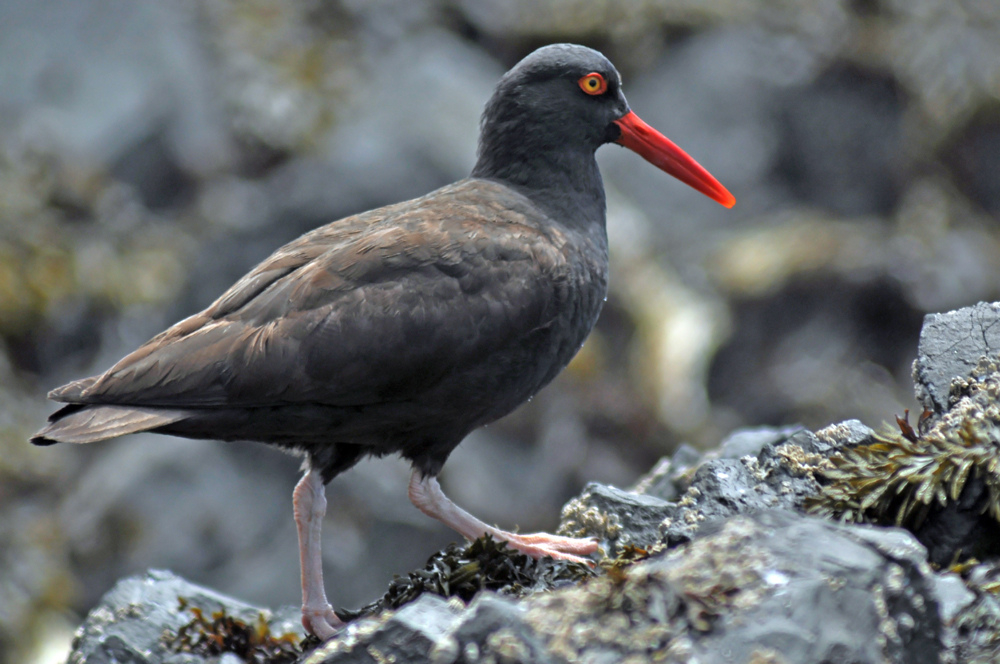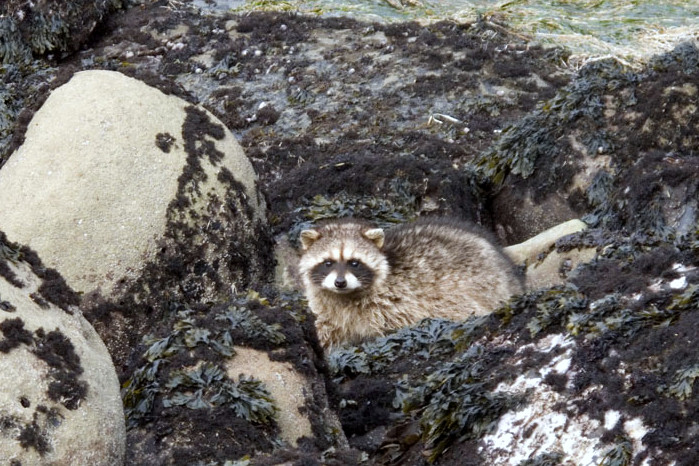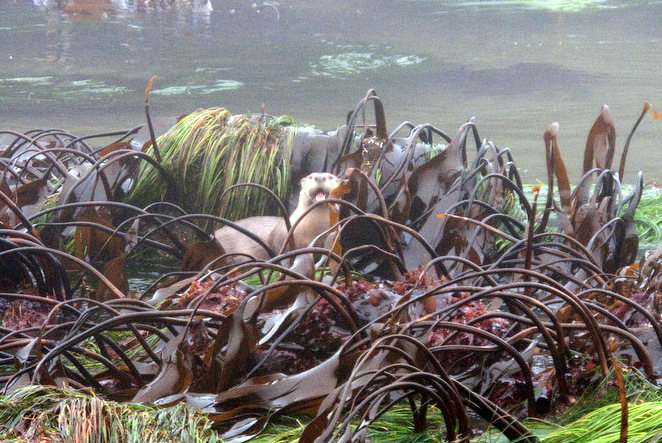
Just as people are drawn to the edge of the sea, other animals are drawn here, too.
Look down the shore a bit, away from people, and you’ll probably see other land- and air-based animals on the exposed ocean bottom.
Many shorebirds are adapted to feeding at the water’s edge or just beneath water or substrate. The more-familiar shorebirds, such as various sandpipers, probe beach sediments for their prey, but there are also shorebirds that make a living on the rocky shore.
Do not disturb the other visitors to the rocky intertidal; this is important feeding and resting habitat for them.
Black oystercatchers feed by probing among rocks and in the mussel beds for crabs and other prey, by prying limpets off the rocks, by deftly inserting their bill into a mussel to cut it open or by hammering shells open. Each oystercatcher may favor a particular feeding technique and mates with another that feed the same way; together the adults teach their offspring the family feeding methods.
Robin-sized, surfbirds and turnstones walk over the exposed intertidal communities, poking through the seaweeds and attached animals with short, pointed bills, seeking small prey. Look for their distinctive black-and-white wing markings.
Ever opportunists, gulls wander the rocky intertidal seeking loose prey and other edible bits. And, not limited to sandy shores, herons come to the edges of all waters to catch fish, invertebrates, and other animals.
The wildlife using offshore rocks, reefs and islands are extremely susceptible to human disturbance, thus they are closed to public entry year-round by the US Fish and Wildlife Service (USFWS). Visit the coastal wildlife viewing page of Oregon's coastal branch of the USFWS for more information.

Evolved from land animals millennia ago, now-seagoing seals and sea lions rest on the sea’s edge. (With somewhat different body structures, sea lions can walk on land, seals can only worm and wiggle on land.) Harbor seal are common on Oregon’s rocky shore, as are California sea lions and Steller sea lions.
Baby seals may rest on shore when the mother is off fishing; please do not disturb them—the mother will come back and care for them.

Fellow mammals such as raccoons and river otters visit tidepools seeking a meal. While rare, sea otters occasionally visit coastal Oregon. Visit this USFWS page to learn how to tell the difference between river and sea otters.
